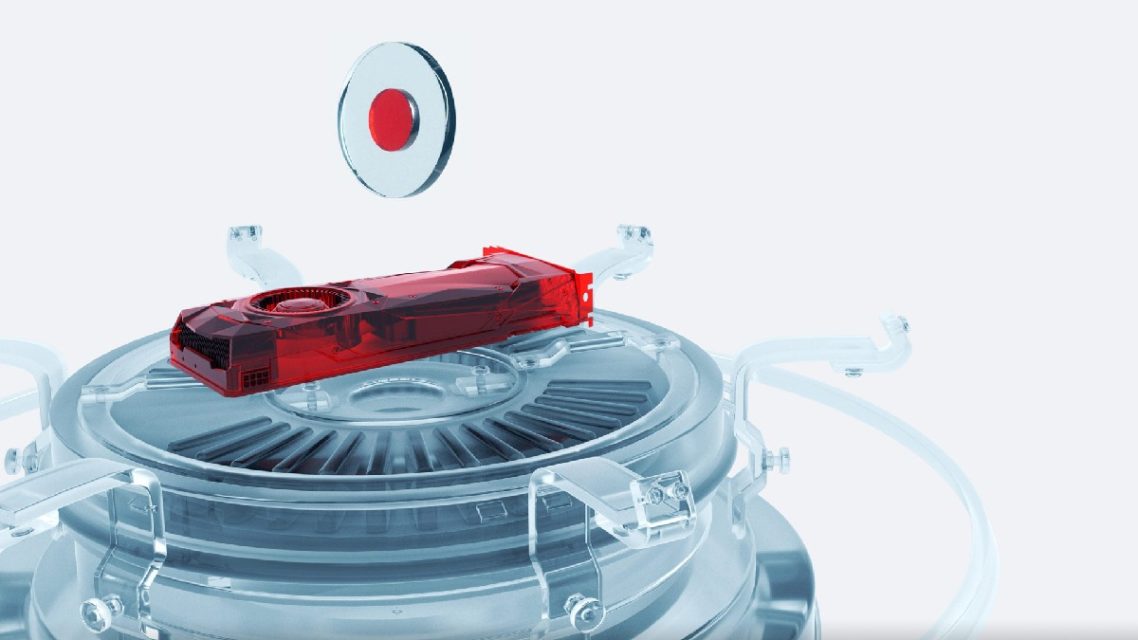In this article, we tried to answer questions such as what is RNDR coin, what is crypto currency Render (RNDR), how to buy RNDR coin. Here are the details about the RNDR coin review and its future…
As visual technology advances, consumers and businesses alike are pushing for higher resolution content and computer-generated graphics. Creators, designers and video editors are constantly creating videos, animations and graphics for various projects. As long as it’s a high-resolution image or animation, rendering is used.
Major blockbusters with realistic CG animations (such as the Marvel movie series) and video games with immersive graphic representations are just two of many examples.
This increasing pressure from the creative and consumer economy is one of the main drivers of global demand for more processing power. That’s why the idea of Render (RNDR) was born as a solution for various industries hungry for more processing and GPU rendering power.
The design of the network aims to meet the increasing global demand for computing. By allowing access to scalable GPU computing power, anyone can build their creative vision without high overhead and hardware. This can include anything from simple videos to immersive AR/VR environments and much more.
How much is RNDR Coin?
According to current crypto money market data, 1 RNDR Coin 12.15 TL is traded in TL. RNDR Coin price has fluctuated -11.10% in the last 24 hours. The trading volume of RNDR Coin in the last 24 hours is 14,561,685 $ and its total market cap is 187,632,937 $ dollars.
How Much Is RNDR Coin?
According to current crypto money market data, 1 RNDR Coin 0.739954 $ is traded at dollars.
What is Render Token (RNDR)?
Render Network is a protocol based on the Ethereum blockchain that provides distributed GPU processing power. Anyone can buy processing power with RNDR tokens. OTOY, a graphics-oriented company with over two decades of experience in this field, manages the protocol.
New technologies will continue to push processing requirements, also known as processing power. Following the growing popularity of DeFi and its ever-expanding metadata store, Render’s protocol aims to keep pace with increasing GPU consumption by offering enormous processing power.
A more sensible way to use GPU computing power than the proof-of-work consensus (PoW) that powers popular cryptocurrencies like Bitcoin.
Render also relies on smart contracts to ensure secure token exchange, mintage and rights protection.
The software that powers the entire platform is OctaneRender® and the power unit is OctaneBench®. OctaneRender now supports both NVIDIA and AMD GPUs. Additionally, both Windows and macOS users can use the software to share their computing power with the network.
OctaneBench® determines the power of graphics cards and uses metrics to classify the pricing tiers of services on the platform. Nodes consider node reputation, security, speed, and cost to place them in a particular pricing tier.
On top of that, the system network also offers a storage solution through its partnership with Sia, a practical, decentralized storage solution that helps content creators keep all their valuable renders in one place.
What Is GPU Processing Power Used For?
Increasing rendering needs are driving the increasing popularity of Render Network. The network can be used to create:
- Videos
- High resolution images
- NFTs
- Metaverse fields
- 3D animations
These are just some examples, because the processing power has applications for a wide variety of digital creations. Being able to quickly create digital assets is particularly important to the growing VR and AR industries. Additionally, given that the metaverse industry is rapidly becoming mainstream, there are huge opportunities to create digital assets for their platform.
Processing power plays an important role in real-time, on-screen digital projections. If it wasn’t enough, the results would be choppy, pixelated and low resolution. It would be impossible to stream digital concerts and other similar events live, because in general it would not be pleasant to watch and not immersive at all.
The current challenge with computing power is overhead. Companies can invest heavily in most on-premises solutions as they don’t always need it, but they don’t always need it, not GPU power. These idle GPUs waste financial resources and power.
With rendering, users rent the processing power already available on the network. There is no need to make additional investments, instead you simply pay a small fee to borrow the available processing power when needed.
“Tenants” are actually referred to as Node Operators. These are essentially millions of network members who lease their processing power to the network. When someone needs processing power, they get it from network nodes and use RNDR tokens to pay for the service.

Win-Win Processing Power
Both the creator and service provider are safe in change. When the renderer (or GPU vendor) finishes the job, there is a watermark to prove the job was completed as intended. To release funds from escrow, the digital creator must approve the end of the processing job.
On top of that, the network enables the creation of digital rights. Every creator gets creative rights that protect the copyright of every product created. The ultimate goal is to create a complete marketplace with 2D and 3D assets where people can trade.
Household names such as filmmaker and director JJ Abrams, Mozilla Firefox co-founder and JavaScript creator Brendan Eich, and Ari Emanuel, CEO of talent holding company Endeavour, are the project’s advisors. These seasoned veterans in the digital economy have a lot of confidence in the whole project and have been pointing it in the right direction so far.
It’s good to see that Apple devices can now join the network via Octane X™ software, as we’ll discuss it in more detail below.
What is RNDR Coin?
RNDR is an ERC20 token specific to the Render Network. It belongs to the category known as utility tokens that allow holders to pay for services on a network. The entire network runs on Ethereum, the giant platform that hosts countless DeFi.
Decentralized Finance (DeFi) takes the concept of decentralized blockchain and applies it to the world of finance.
In 2016, there was an ICO for 25% of the total RNDR Token supply. The cost per unit was $0.25, which was a big deal for early adopters.
Today, there is a total supply of 536 million RNDRs, of which approximately 150 million are in circulation. About 65% is in escrow, providing secure payments between creators and creators. It is also ready for 10% more user acquisition in Render Reserve (RR).
What Is RNDR Token Used For?
RNDR Token is the currency of Render Network. It connects creators with service providers and vice versa. Any creator who needs to render an image will need RNDR tokens to purchase the rendering service from the node on the network.
Besides generating, the protocol can also be used to print NFTs and specify processed products. This means artists can benefit from future royalties when someone trades their NFT. This could revolutionize the 2D and 3D art worlds, as digital creators will definitely want to protect their rights and monetize their art without being interrupted by middlemen.
RNDR Token is not the only way to purchase services on Render. Those unfamiliar with cryptocurrencies can easily purchase RNDR Credits backed by the protocol’s tokens. When someone spends RNDR Credits, service providers receive payments in RNDR.
Significant RNDR Projects
RNDR continues to expand in several different ways. Among the key moves of 2021 are:
Octane X
Previously, only Windows users, Octane X, a software tool that allows users to access the Render Network could access the network.
Apple users are now basically allowed to use Octane X to anyone running macOS Big Sur or later, and by extension, use Render Network’s seamless GPU rendering capabilities for the most demanding projects. Considering that millions of creators use Apple devices to create digital art, it is one of the largest ecosystems in the computing world and therefore a huge market with high demand for rendering capabilities.
Given free access to Octane X® Enterprise and Octane X Prime to encourage Mac users inclusion. The former provides access to all the features of Render, including heavy-duty tools such as the Unity engine, Daz 3D, Adobe After Effects, and more, while the latter is more suitable for small-scale rendering projects.
Octane X also allows Apple users to share the power output of their graphics cards and contribute to the processing power of the network.
Another exciting development is the inclusion of AMD support as the platform initially only supported NVIDIA graphics cards. This means that Render now supports almost all new computers.
NFTs boom
In the fall of 2021, NFTs created on the Render Network will pay $500 million to various creators who primarily use Render to perform over a quarter million jobs. reportedly on sale.
To boost the platform’s popularity, Render has teamed up with influential artists with huge cult followings such as Gene Roddenberry, Alex Ross, and Beeple. While Gene Roddenberry’s Star Trek was a global phenomenon enjoyed by millions, Alex Ross brought thousands of Marvel comics to life. Beeple’s art is hugely popular and is currently at the forefront of NFT culture.
RNDR and these artists together created the Archive project to showcase a way creators can capture an artist’s lifetime achievement and present it on a blockchain.
Another project yet to come is the first holographic NFT. Transferring all its artifacts to RNDR, Beeple joins this project to push the future of NFTs forward.
Many other artists are tapping into the platform’s potential to create metaverse elements, more of which you can find in the platform’s official blog post. Render uses their platform to experiment with high resolution images.
OctaneRender Future Updates
The Render Network will continue to grow with future updates promising various improvements. A notable update is Arnold builder, which will allow Autodesk creators to use the platform.
This opens the door for countless companies in various industries to use the software to create complex projects in construction, manufacturing, aerospace, medical devices, oil and gas, consumer products, and more.
RNDR Coin Review and Future
The potential of any platform depends on its practicality. In this context, Render is a promising project with many potential use cases. Its core product will help companies and individual creators save millions of dollars without sacrificing creation speed.
Content creators and service providers get the best of both worlds. Artists and other creators have access to unlimited network power, while providers can earn passive income by renting their equipment to the network.
Given the involvement of the leading names in the project and the current growth rate, it’s safe to assume that RNDR is a good investment. The platform will continue to dominate the decentralized cloud rendering industry as the top choice for many artists with no competitors in sight.
Render is an excellent example of how blockchain technology can help decentralize different processes. As a distributed GPU rendering network, Render helps keep idle GPUs to good use while keeping energy efficiency high. With easy scalability, rights management, and massive processing power, the RNDR team has essentially democratized cloud processing services and created a platform that is likely to stay here.
Exciting times await as the protocol continues to grow and bring more updates to the table. Investing in render might be a wise choice right now.







